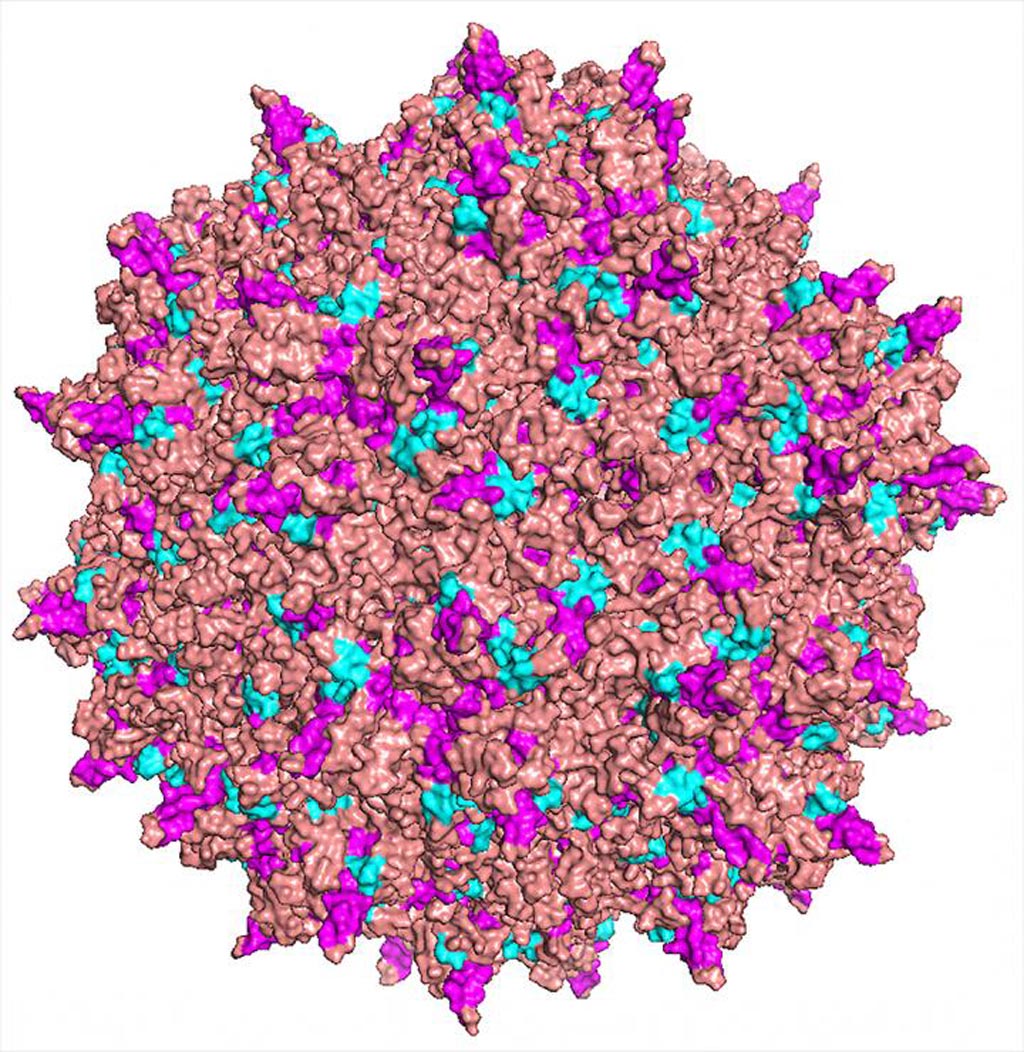CRISPR/Cas9 Treatment Eases Symptoms in ALS Model
By LabMedica International staff writers
Posted on 02 Jan 2018
Neurodegenerative disease researchers treated a mouse model of amyotrophic lateral sclerosis with a modified adeno-associated virus that delivered the CRISPR/Cas9 gene-editing tool to the animals' neurons, where it disabled a malfunctioning gene.Posted on 02 Jan 2018
Amyotrophic lateral sclerosis (ALS) is a fatal and incurable neurodegenerative disease characterized by the progressive loss of motor neurons in the spinal cord and brain. In particular, autosomal dominant mutations in the superoxide dismutase 1 (SOD1) gene are responsible for about 20% of all familial ALS cases.

Image: An adeno-associated virus (AAV) was used to transport genes for CRISPR/Cas9 into motor neurons to delay onset of symptoms of ALS in mice (Photo courtesy of Dr. David Schaffer, University of California, Berkeley).
CRISPR/Cas9 is regarded as the cutting edge of molecular biology technology. CRISPRs (clustered regularly interspaced short palindromic repeats) are segments of prokaryotic DNA containing short repetitions of base sequences. Each repetition is followed by short segments of "spacer DNA" from previous exposures to a bacterial virus or plasmid. Since 2013, the CRISPR/Cas9 system has been used in research for gene editing (adding, disrupting, or changing the sequence of specific genes) and gene regulation. By delivering the Cas9 enzyme and appropriate guide RNAs (sgRNAs) into a cell, the organism's genome can be cut at any desired location. The conventional CRISPR/Cas9 system is composed of two parts: the Cas9 enzyme, which cleaves the DNA molecule and specific RNA guides that shepherd the Cas9 protein to the target gene on a DNA strand. Efficient genome editing with Cas9-sgRNA in vivo has required the use of viral delivery systems, which have limitations for clinical applications.
For the current study, investigators at the University of California, Berkeley (USA) employed a highly modified adeno-associated virus (AAV) that that had been engineered to target only motor neurons in the spinal cord and deliver the gene encoding the Cas9 protein into the nucleus. The animal model was the G93A-SOD1 mouse model of ALS, which expresses the mutated human SOD1 gene.
The investigators reported in the December 20, 2017, online edition of the journal Science Advances that following in vivo delivery via the adeno-associated virus vector, CRISPR/Cas9 introduced a frameshift-induced mutation that disabled the mutant SOD1 gene function. Genome editing reduced mutant SOD1 protein by more than 2.5-fold in the lumbar and thoracic spinal cord, resulting in improved motor function and reduced muscle atrophy. Furthermore, ALS mice treated by CRISPR-mediated genome editing had about 50% more motor neurons at end stage and displayed a delay of about 37% in disease onset and an approximately 25% increase in survival compared to control animals.
"The treatment did not make the ALS mice normal and it is not yet a cure," said senior author Dr. David Schaffer, professor of chemical and biomolecular engineering at the University of California, Berkeley. "But based upon what I think is a really strong proof of concept, CRISPR/Cas9 could be a therapeutic molecule for ALS. When we do additional optimization of the delivery to get CRISPR/Cas9 into an even higher percentage of cells, we think we are going to see even better increases in lifespan."
"We have engineered new AAV vehicles that are capable of high-efficiency delivery to a number of cell and tissue targets in the body, and when CRISPR/Cas9 came along, we viewed it as a wonderful opportunity to put together this incredibly powerful cargo with the ability to carry that cargo to a number of cells and disease targets in vivo," said Dr. Schaffer. "Researchers in the field really know we need better vectors that can target cells through a simple, logical route of administration, and can do so in a very, very efficient way. Ours do."
Related Links:
University of California, Berkeley








 (3) (1).png)





